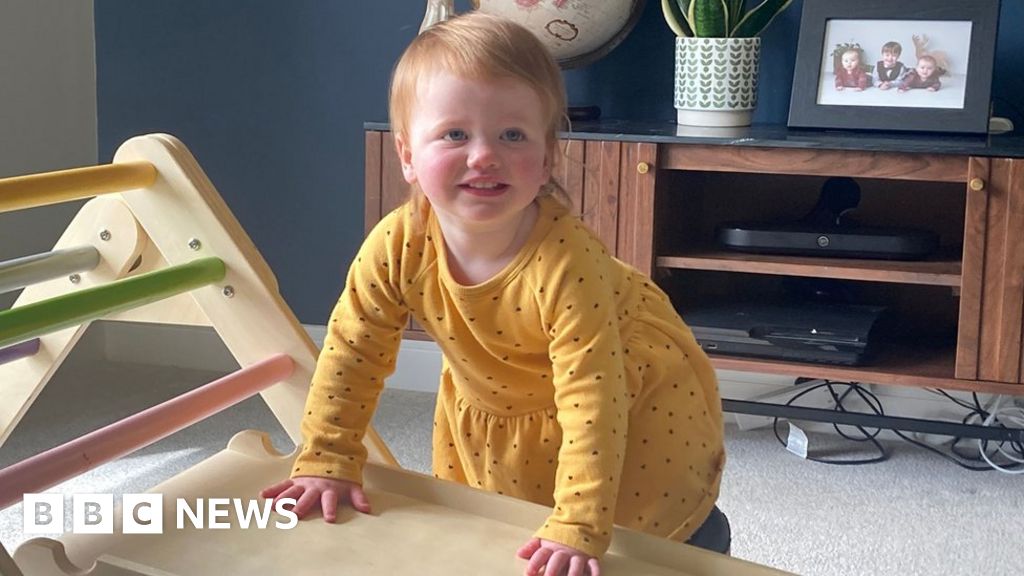- by Michelle Roberts
- digital health editor
A deaf girl born in Britain can now hear without assistance after a groundbreaking gene-therapy treatment.
Opal Sandy was treated shortly before her first birthday – and six months later, she can hear soft whisper-like sounds and is starting to talk, saying words like “mummy”, “dada” and “uh-oh”. Still working.
The therapy, given as an infusion into the ear, replaces the faulty DNA, causing her to have hereditary deafness.
OPAL is part of a trial recruiting patients in the UK, US and Spain.
Doctors in other countries, including China, are also exploring similar treatments for the OTF gene mutation.
Her parents, Jo and James, from Oxfordshire, say the results have been amazing – but getting Opal permission to be the first to trial this treatment, made by Regeneron, was extremely difficult.
“It was really scary, but I think we were given this unique opportunity,” Joe told me.
Her five-year-old sister Nora also has a similar type of deafness and recovers well after receiving an electrical cochlear implant.
Instead of amplifying sound, like a hearing aid, it gives the “sense” of hearing by directly stimulating the auditory nerve that communicates with the brain, bypassing damaged sound-sensing hair cells in a part of the inner ear. snail.
In contrast, the therapy uses a modified, harmless virus to deliver a functioning copy of the Otof gene into these cells.
Opal underwent therapy in her right ear under general anesthetic and a cochlear implant was placed in her left ear.
Just a few weeks later, he started hearing loud clapping-like sounds in his right ear.
And after six months, her doctors at Addenbrooke's Hospital in Cambridge confirmed that her ear heard soft sounds – even very soft whispers – almost normally.
“It's amazing to see her response to sound,” lead investigator and ear surgeon Professor Manohar Bans told BBC News.
“It's a very happy time.”
Experts hope this therapy may also work for other types of profound hearing loss.
More than half of the cases of hearing loss in children are genetic.
And Professor Bains hopes the trial could lead to gene therapy being used for more common types of hearing loss.
He said, “I'm hoping that we can start using gene therapy in young children … where we can actually restore hearing and they won't need cochlear implants and other technologies.”
image Source, Joe and James Sandy
Hearing loss caused by variations in the Otof gene is usually not detected until children are two or three years old, when speech delays are likely to occur.
But genetic testing is available on the NHS for at-risk families.
Professor Bains said: “The younger we can restore hearing, the better for all children as the brain begins to switch off its plasticity.” [adaptability] “After about age three or so.”
Opal's experience, along with other scientific data from the trial, is being presented at the American Society of Gene and Cell Therapy in Baltimore, US.
Martin McLean of the National Deaf Children's Society said more options were to be welcomed.
“With the right support from the beginning, deafness should never be a barrier to happiness or satisfaction,” he said.
“As a charity, we help families make informed choices about medical technologies, so they can give their deaf child the best possible start in life.”
Additional reporting by Nicky Stastny and James Anderson.
